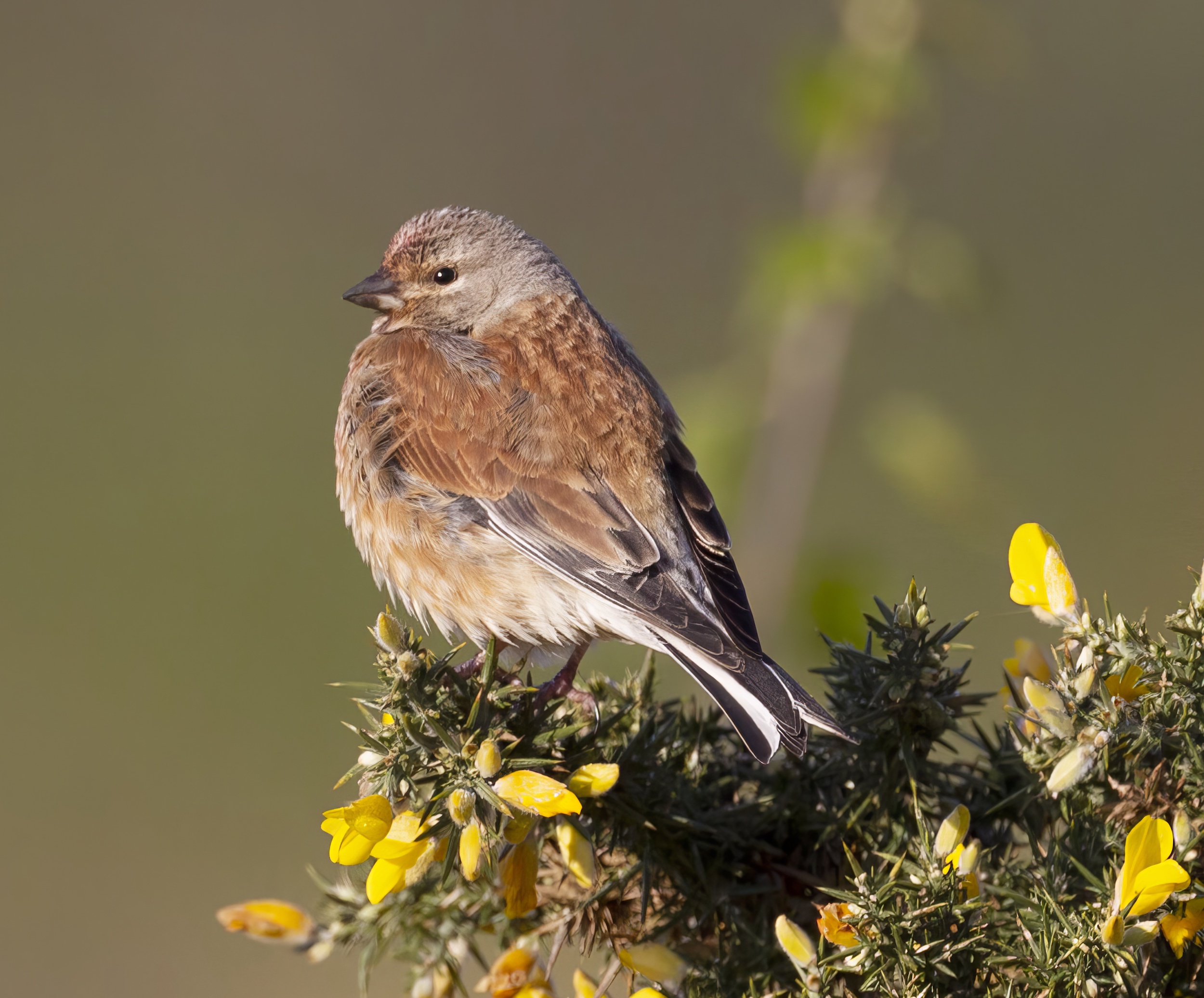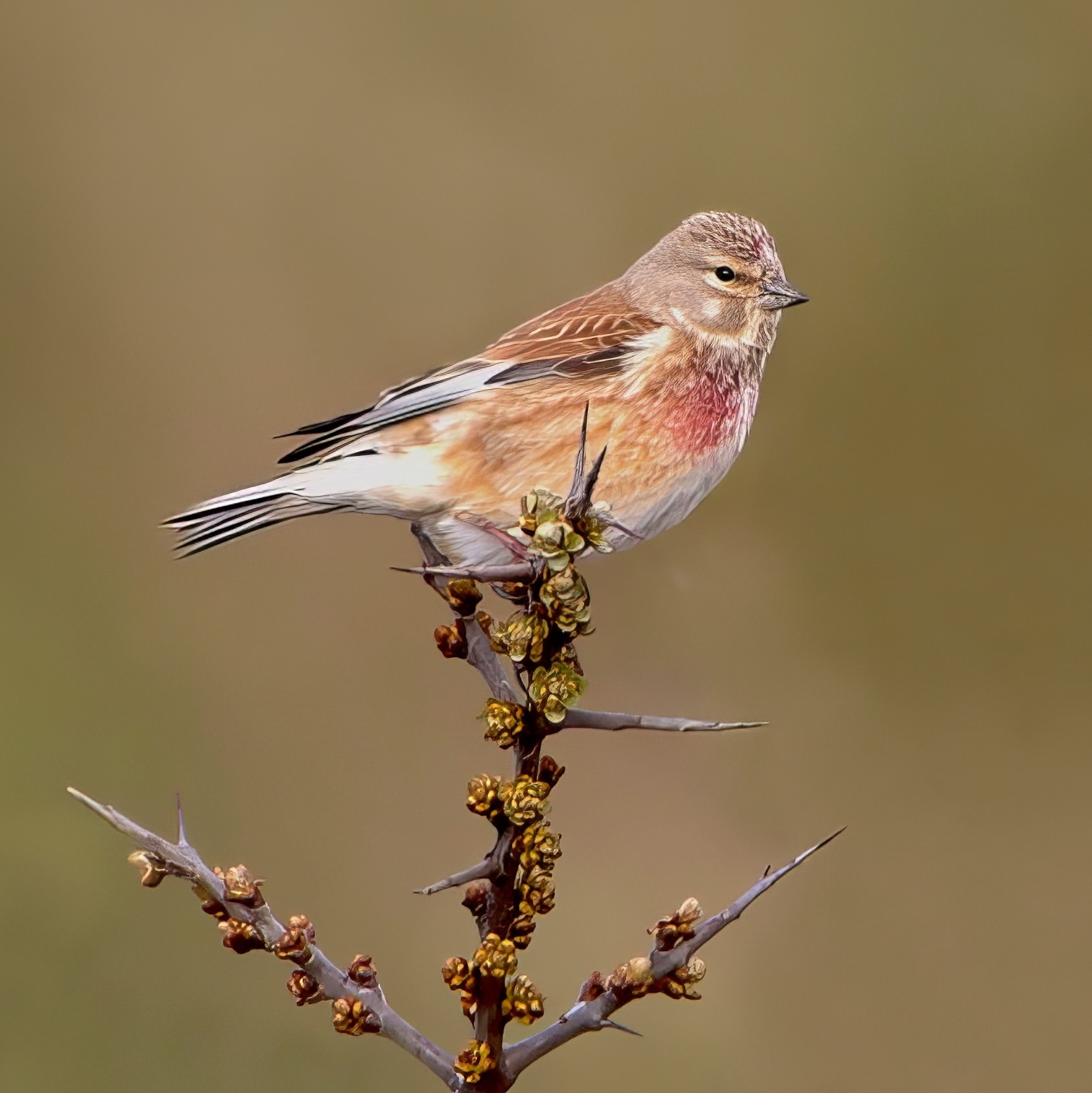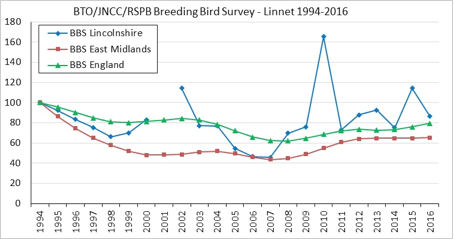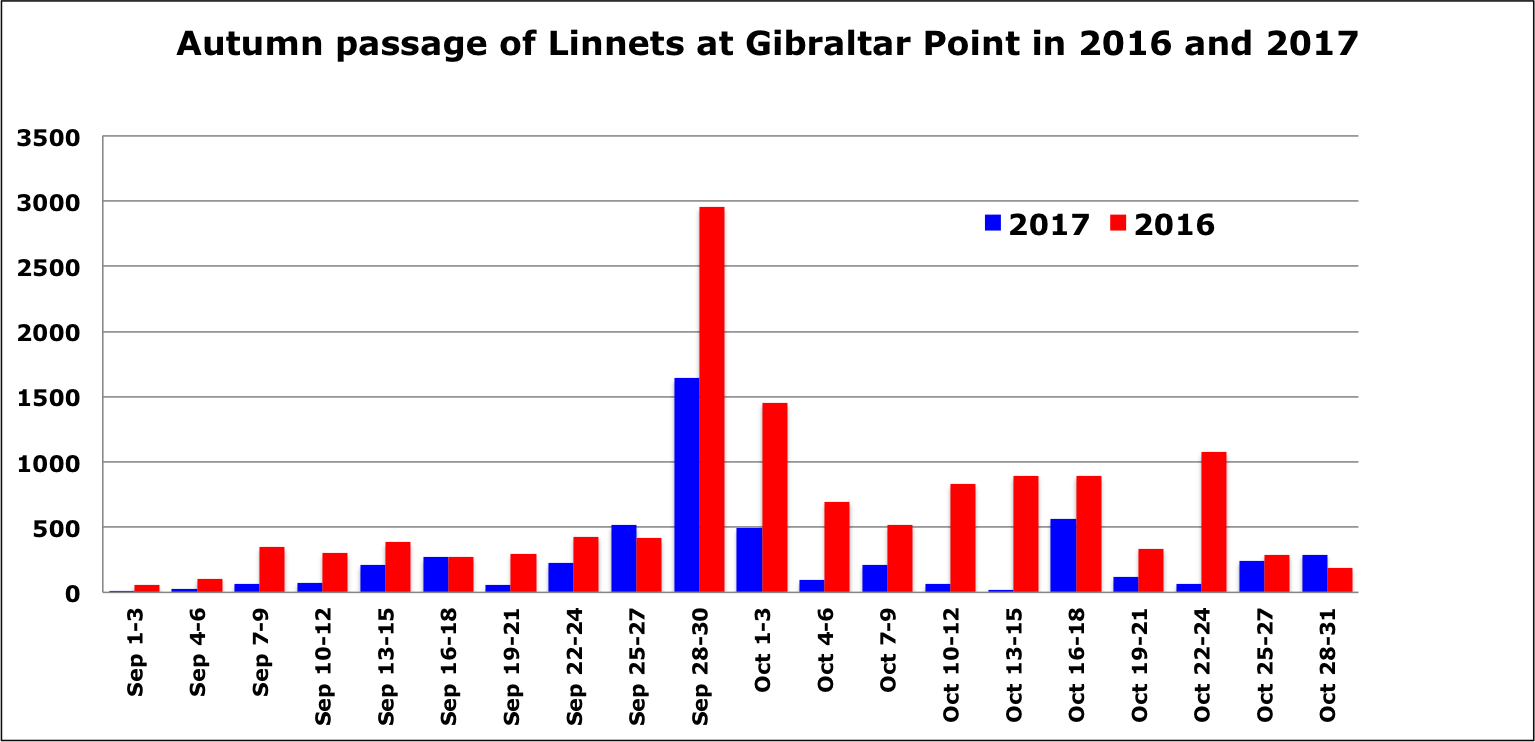Linnet Linaria cannabina
Very common resident, passage migrant and winter visitor. Red List.


Linnets: left, Laughton Forest May 2012 (Graham Catley) and right, Donna Nook April 18th 2014 (Russ Telfer).
Linnet was one of the worst hit birds through agricultural intensification, possibly associated with the increased cultivation of oilseed rape, during the 1960s-1980s and the English population plummeted from 1966 and hit a low point in the late 1980s. Even after the Atlas was done in the 1980s it was still found breeding in nearly every tetrad and the population was estimated at between 18,000-23,500 pairs. The BTO/JNCC/RSPB Breeding Bird Survey (BBS) started in 1994, since when English and Welsh populations declined by slightly more than 30%, but Scottish populations went up by 10% and those in Northern Ireland doubled. The BBS index graphs for the East Midlands and England as a whole have been showing a gentle increase since 2007, a pattern mirrored by the Lincolnshire data (though with an anomalous value in 2010). Step forward to 2016 and the APEP4 and the adjusted population is estimated at 30,000 pairs. The chart shows Lincolnshire Linnets have done better than the wider English population, but they have shared in a decline over the last three years.

Linnets are partial migrants, so winter habitat quality of local areas may not be as critical to breeding season success as it is for more sedentary species. Large numbers move south along the Lincolnshire coast in the autumn with most seen during September and October. Peak counts from the winter Atlas survey during the 1990s saw 750 in TF49 and 800 in TF55. There is a healthy spring and autumn passage along the coast and peak day counts at Gibraltar Point in the autumn come between September 10th-30th and range from 401 on September 17th, 2015 to 1,827 on Sep 30th, 2017. The numbers counted during visible migration at Gibraltar Point in the autumns of 2016 and 2017 are shown in the chart below. The highest three-day totals were seen during 28th-30th September in both years and the pattern is broadly similar though passage was heavier in 2017. Totals for September were 2,292 in 2016 and 3,586 in 2017, and for October 1,182 in 2016 and 6,202 in 2017. In October 2017 there were six dates with a count of more than 500 birds.
BTO ringing data has shown over the years that the majority of Linnets wintering in or passing through the county has come from France (23) or Spain (15). One adult male ringed near Lincoln on 4th March 1971 was hit and killed by a car in Norway on June 27th of the same year. A smaller number of birds ringed abroad and controlled in Lincolnshire have come from France (4) and Belgium (2).

(Account prepared April 2019; updated with reference to the new Birds of Lincolnshire (2021) December 2022)
